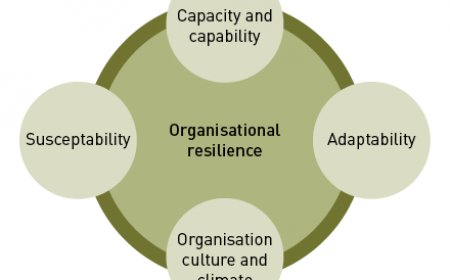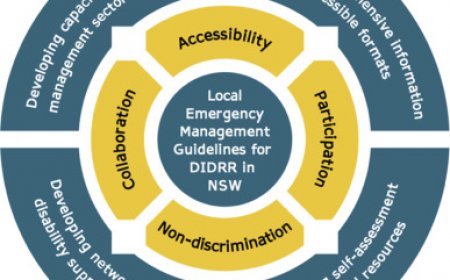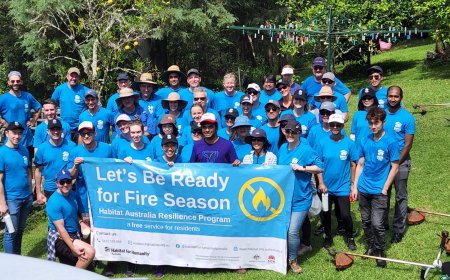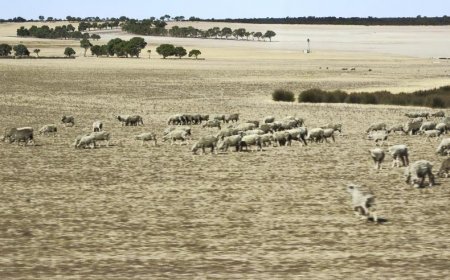Adventure & Outdoor Travel: Wildlife Safaris in African Savannas
Embark on an unforgettable adventure with our guide to wildlife safaris in African savannas. Discover top destinations, essential tips, and breathtaking experiences.
The allure of the African savanna is timeless, drawing adventurers and nature enthusiasts from across the globe. These vast grasslands, teeming with life, offer an unparalleled opportunity to witness some of the planet's most iconic wildlife in their natural habitats. From the majestic African elephant to the stealthy leopard , the savannas are a living tapestry of biodiversity. For those seeking adventure and outdoor travel , few experiences rival the thrill of embarking on a wildlife safari in these untamed landscapes.
Safaris are more than just tours; they are immersive journeys into the heart of Africa’s wilderness. Whether you’re traversing the golden plains of the Serengeti or exploring the rugged terrains of Kruger National Park, every moment spent in the savanna offers a chance to reconnect with nature. This article delves deep into the intricacies of planning and experiencing a safari adventure, ensuring that your journey is not only memorable but also enriching.
Why Choose a Safari Adventure?
A safari is not merely a vacation—it’s an exploration of one of Earth’s last true wildernesses. The sheer diversity of ecosystems, the raw beauty of untamed landscapes, and the opportunity to observe wildlife up close make safaris a bucket-list experience for many. Unlike traditional vacations, safaris immerse you in the rhythm of nature, offering a profound sense of connection to the environment and its inhabitants.
For those who crave adventure travel , safaris provide endless opportunities to step outside your comfort zone. Whether it’s tracking lions on foot, gliding silently over the savanna in a hot air balloon, or camping under a canopy of stars, each day brings new challenges and discoveries. The unpredictability of wildlife encounters ensures that no two safaris are ever the same, making every trip unique.
Understanding the African Savanna Ecosystem
To fully appreciate the magic of a wildlife safari, one must first understand the ecosystem that sustains it. The African savanna is a biome characterized by its open grasslands dotted with scattered trees and shrubs. This unique environment supports an extraordinary diversity of species, making it one of the most ecologically significant regions on Earth.
Key Features of the Savanna
The savanna's climate plays a pivotal role in shaping its ecosystem. With distinct wet and dry seasons, the region experiences dramatic fluctuations in vegetation and water availability. During the wet season, lush grasses flourish, providing abundant grazing opportunities for herbivores like zebras , wildebeests , and giraffes . Conversely, the dry season forces animals to congregate around permanent water sources, creating intense competition and offering unparalleled wildlife viewing opportunities.
The Role of Fire in the Savanna
Fire is a natural and essential component of the savanna ecosystem. Periodic wildfires clear dead vegetation, promote the growth of fresh grasses, and prevent the encroachment of forests. These fires, often ignited by lightning strikes during the dry season, play a crucial role in maintaining the balance between grasslands and woodlands.
Water Sources as Lifelines
Water is the lifeblood of the savanna, especially during the dry months when rainfall is scarce. Rivers, lakes, and seasonal pans serve as vital lifelines for both wildlife and vegetation. Iconic locations like the Okavango Delta in Botswana and the Chobe River in Namibia attract large concentrations of animals, making them prime spots for wildlife viewing.
Biodiversity Hotspot
The savanna is home to an incredible array of species, many of which are endemic to the region. Predators such as lions , cheetahs , and hyenas dominate the food chain, while smaller mammals like meerkats and mongooses thrive in cooperative social structures. Birds of prey, including eagles and vultures , soar above the plains, completing the intricate web of life.
The Big Five
No discussion of African wildlife would be complete without mentioning the Big Five : lions, leopards, elephants, buffaloes, and rhinoceroses. These iconic species were originally named by big-game hunters for being the most challenging and dangerous to hunt on foot. Today, they represent the pinnacle of wildlife sightings for safari-goers.
Herbivore Migration Patterns
One of the most awe-inspiring spectacles in the savanna is the annual migration of herbivores. In East Africa, millions of wildebeests, zebras, and gazelles traverse the Serengeti-Mara ecosystem in search of fresh grazing grounds. This cyclical movement, driven by rainfall patterns, sustains predators and scavengers throughout the year.
Planning Your Safari Adventure
Embarking on a safari requires meticulous planning to ensure a seamless and rewarding experience. From choosing the right destination to selecting the best time to visit, every decision impacts the quality of your journey.
Choosing the Right Destination
Africa boasts numerous world-renowned safari destinations, each offering unique attractions. The Masai Mara in Kenya is famous for its annual wildebeest migration, often referred to as the "Greatest Show on Earth." Meanwhile, Tanzania's Serengeti National Park provides year-round game viewing opportunities, thanks to its diverse habitats and resident wildlife populations.
Southern Africa vs. East Africa
While East Africa is renowned for its vast plains and migratory herds, Southern Africa offers a different kind of safari experience. Countries like Botswana, South Africa, and Namibia are known for their exclusive lodges, private reserves, and diverse ecosystems. Botswana’s Okavango Delta , for example, combines aquatic adventures with traditional game drives, while Namibia’s Namib Desert showcases starkly beautiful landscapes.
Hidden Gems
For travelers seeking off-the-beaten-path destinations, consider lesser-known parks like Zambia’s South Luangwa or Zimbabwe’s Mana Pools . These areas may lack the infrastructure of larger parks but offer intimate encounters with wildlife and fewer crowds.
Best Time to Visit
Timing is crucial when planning a safari. The dry season, typically from June to October, is widely regarded as the optimal period for wildlife viewing. During this time, animals gather around waterholes, making them easier to spot. However, the wet season, from November to May, brings its own charm, with lush landscapes and vibrant birdlife.
Regional Variations
It’s important to note that weather patterns vary across Africa. While East Africa experiences a long rainy season from March to May, Southern Africa’s rains fall primarily between December and February. Researching regional climates will help you choose the perfect timing for your safari.
Types of Safaris
Safaris come in various forms, catering to different preferences and budgets. Understanding the options available will help you choose the experience that aligns with your expectations.
Game Drives
Game drives are the quintessential safari activity, allowing participants to explore the savanna in specially designed 4x4 vehicles. These drives are led by experienced guides who possess extensive knowledge of the local wildlife and ecosystems. Morning and evening drives are particularly popular, as they coincide with peak animal activity.
Night Drives
Some reserves offer night drives, providing a glimpse into the nocturnal world of the savanna. Equipped with spotlights, these excursions reveal elusive creatures like porcupines , genets , and civets that remain hidden during daylight hours.
Walking Safaris
For a more immersive experience, walking safaris provide an up-close perspective of the savanna. Accompanied by armed rangers, guests traverse the landscape on foot, learning about animal tracks, plant species, and survival skills. This type of safari fosters a deeper connection with nature and enhances appreciation for the environment.
Bush Skills and Survival Techniques
Walking safaris often include lessons on bushcraft, teaching participants how to identify edible plants, track animals, and navigate using natural landmarks. These skills not only add depth to the experience but also instill a sense of self-reliance.
Hot Air Balloon Safaris
For a truly unforgettable adventure, consider a hot air balloon safari. Floating silently above the savanna at sunrise, you’ll enjoy panoramic views of the landscape below. This serene experience offers a unique vantage point for observing wildlife and capturing stunning photographs.
Romantic Getaways
Hot air balloon safaris are particularly popular among couples celebrating special occasions. Many operators offer champagne breakfasts upon landing, adding a touch of luxury to the experience.
Luxury vs. Budget Safaris
When planning a safari, it’s essential to determine your budget and desired level of comfort. Luxury safaris cater to travelers seeking opulence and exclusivity, with accommodations ranging from lavish lodges to private tented camps. These experiences often include gourmet meals, personalized service, and exclusive access to remote areas.
Luxury Safari Highlights
- Private Game Reserves : Smaller reserves limit visitor numbers, ensuring a more intimate experience.
- Spa Treatments : Indulge in massages and wellness therapies after a day of game viewing.
- Fine Dining : Savor multi-course meals prepared by award-winning chefs.
Budget Safari Options
On the other hand, budget safaris provide excellent value for money without compromising on essential elements. Shared accommodations, communal dining, and group activities make these safaris ideal for solo travelers and families alike.
Self-Drive Safaris
For adventurous souls, self-drive safaris offer flexibility and independence. Renting a 4x4 vehicle allows you to explore national parks at your own pace, though it requires careful route planning and adherence to park regulations.
Essential Gear for Your Safari
Packing appropriately is key to maximizing your safari experience. Here’s a comprehensive list of items to bring along:
- Binoculars : Essential for spotting distant wildlife.
- Camera Equipment : A DSLR camera with a zoom lens ensures high-quality photos.
- Neutral-Colored Clothing : Khaki, beige, and olive tones blend seamlessly with the environment.
- Comfortable Footwear : Sturdy hiking boots are recommended for walking safaris.
- Sun Protection : Hats, sunglasses, and sunscreen protect against harsh UV rays.
- Insect Repellent : Prevent mosquito bites and reduce the risk of malaria.
Safety Tips for Wildlife Encounters
While safaris are generally safe, it’s important to exercise caution when encountering wildlife. Always follow your guide’s instructions and maintain a respectful distance from animals. Avoid loud noises or sudden movements, as these can provoke defensive reactions.
Cultural Immersion During Your Safari
African safaris offer more than just wildlife encounters; they provide opportunities to engage with local communities and learn about their traditions. Visiting Maasai villages, participating in cultural dances, and purchasing handmade crafts support sustainable tourism and foster cross-cultural understanding.
Environmental Conservation Efforts
Many safari operators prioritize environmental conservation, implementing eco-friendly practices to minimize their impact on the ecosystem. By choosing responsible tour companies, you contribute to the preservation of Africa’s natural heritage.
Best Nearby Attractions
In addition to the savanna itself, nearby attractions enhance the overall safari experience. These destinations offer a diverse range of activities that complement your wildlife adventures and provide deeper insights into Africa’s rich cultural and natural heritage.
Cultural Heritage Sites
Many safari destinations are located near culturally significant landmarks. For instance, in Kenya, the Great Rift Valley is not only a geological marvel but also home to ancient fossils and archaeological sites. Visitors can explore museums like the Koobi Fora Museum , which houses artifacts from early human settlements.
In Tanzania, the Olduvai Gorge , often referred to as the "Cradle of Humankind," offers guided tours where you can learn about paleoanthropological discoveries made by the Leakey family. This site provides a fascinating glimpse into humanity's evolutionary journey.
Natural Wonders
Beyond the savannas, Africa boasts breathtaking natural wonders that are worth exploring. The Ngorongoro Crater in Tanzania is one such gem—a UNESCO World Heritage Site and the world's largest inactive volcanic caldera. Its enclosed ecosystem supports an incredible density of wildlife, including rare species like the black rhinoceros .
For those visiting Botswana, the Kalahari Desert presents an entirely different landscape. Known for its red sand dunes and sparse vegetation, this semi-arid region is home to unique wildlife adapted to harsh conditions, such as the meerkat and brown hyena .
Adventure Activities
If you're seeking adrenaline-pumping experiences, consider adding adventure activities to your itinerary. In South Africa, the Drakensberg Mountains offer hiking trails ranging from easy walks to challenging treks. The Amphitheatre hike culminates in stunning views of towering cliffs and cascading waterfalls.
Zambia’s Victoria Falls , one of the Seven Natural Wonders of the World, is another must-visit attraction. Here, you can enjoy activities like bungee jumping, white-water rafting, or taking a scenic helicopter ride over the falls.
Best Nearby Restaurants
After a day of adventure, indulging in local cuisine at nearby restaurants allows you to savor the flavors of Africa while reflecting on your experiences. From traditional dishes to international fare, there’s something to satisfy every palate.
Traditional African Cuisine
For an authentic taste of Africa, seek out restaurants specializing in regional specialties. In Kenya, try nyama choma (grilled meat) served with ugali (maize porridge) and sukuma wiki (collard greens). Popular spots include Carnivore Restaurant in Nairobi, renowned for its all-you-can-eat meat platters cooked over open flames.
In Tanzania, don’t miss out on pilau , a fragrant rice dish infused with spices and often paired with goat or chicken curry. Street food vendors in Arusha serve delicious snacks like mandazi (fried doughnuts) and chapati (flatbread).
Fine Dining Experiences
Luxury lodges and high-end resorts often feature fine dining establishments offering gourmet meals prepared by world-class chefs. At Singita Grumeti in Tanzania, guests can enjoy multi-course dinners featuring locally sourced ingredients under the stars. Similarly, Royal Malewane in South Africa combines exquisite cuisine with panoramic views of the surrounding wilderness.
International Options
For travelers craving familiar tastes, many safari destinations have restaurants serving international cuisines. Italian pizzerias, Indian curries, and Mediterranean grills are commonly found in tourist hubs like Cape Town, Livingstone, and Maun. These options cater to diverse preferences without compromising quality.
Weather
Understanding the local weather patterns ensures you’re prepared for any conditions during your safari. Africa’s climate varies significantly across regions, so it’s essential to research your destination thoroughly.
Seasonal Variations
Most safari destinations experience two primary seasons: wet and dry. During the wet season (November to April), temperatures are generally milder, and the landscape bursts into vibrant greenery. However, heavy rains may cause roads to become impassable, limiting access to certain areas.
The dry season (May to October) is characterized by warm days and cool nights. While daytime temperatures can soar above 30°C (86°F), evenings often drop below 15°C (59°F). Packing layers will help you adapt to these fluctuations comfortably.
Regional Differences
East African countries like Kenya and Tanzania typically receive long rains from March to May, followed by short rains in November. Southern African nations, including Botswana and Namibia, experience their rainy season between December and February. Coastal areas, such as Zanzibar and Mozambique, enjoy tropical climates year-round, making them ideal for beach extensions after your safari.
Microclimates
Certain regions exhibit microclimates due to their unique geography. For example, the Okavango Delta in Botswana remains lush throughout the year thanks to its permanent water sources. Conversely, the Namib Desert in Namibia receives minimal rainfall, creating starkly beautiful landscapes dominated by sand dunes and salt pans.
Accessibility
Reaching your chosen safari destination involves careful planning, especially when considering transportation logistics. Fortunately, most major safari hubs are well-connected via air and road networks.
Air Travel
International visitors typically arrive at major airports such as Jomo Kenyatta International Airport in Nairobi, Kilimanjaro International Airport in Tanzania, or O.R. Tambo International Airport in Johannesburg. From there, domestic flights operated by airlines like SafariLink and Airlink connect travelers to smaller airstrips near national parks and reserves.
Charter flights are another convenient option, particularly for remote locations like the Selous Game Reserve in Tanzania or the Linyanti Concession in Botswana. These flights reduce travel time and offer aerial views of the stunning landscapes below.
Road Transfers
For shorter distances, road transfers are a cost-effective alternative. Many lodges and tour operators provide private vehicles equipped with experienced drivers who ensure safe and comfortable journeys. Self-drive safaris are also possible in some parks, though they require prior knowledge of navigation and park regulations.
Special Considerations
Accessibility extends beyond transportation; it also includes accommodations tailored to specific needs. Wheelchair-accessible lodges, such as Chobe Safari Lodge in Botswana, cater to travelers with mobility challenges. Additionally, luxury camps often offer private charters and personalized services to accommodate special requests.
How to Plan Your Safari Adventure
From booking your safari to packing essentials, this section provides step-by-step guidance to simplify the planning process. A well-organized approach ensures a seamless and enjoyable experience.
Step 1: Choose Your Destination
Research potential destinations based on your interests, budget, and preferred activities. East Africa is ideal for witnessing the Great Migration, while Southern Africa offers exclusive lodges and diverse ecosystems.
Step 2: Select the Right Time
Consider seasonal factors when deciding when to visit. If wildlife viewing is your priority, aim for the dry season. For birdwatching and photography, the wet season provides lush backdrops and migratory species.
Step 3: Book Accommodations
Reserve accommodations well in advance, especially during peak seasons. Options range from tented camps and eco-lodges to luxury villas. Look for properties with strong sustainability practices to support conservation efforts.
Step 4: Arrange Transportation
Coordinate flights and transfers through reputable operators. Ensure your itinerary aligns with park opening hours and activity schedules to maximize your time in the field.
Step 5: Pack Smart
Prepare a comprehensive packing list tailored to your destination and planned activities. Include essentials like binoculars, camera gear, neutral-colored clothing, sunscreen, insect repellent, and sturdy footwear.
Step 6: Stay Safe
Familiarize yourself with safety guidelines provided by your guide or lodge staff. Always follow instructions during game drives and walking safaris, and avoid approaching wildlife too closely.
Step 7: Embrace Local Culture
Engage with local communities to gain a deeper understanding of their traditions and way of life. Purchase handmade crafts directly from artisans to support sustainable tourism initiatives.
Conclusion
A wildlife safari in the African savanna is a transformative experience, offering a rare glimpse into the wonders of the natural world. By planning carefully and embracing the adventure, you’ll create memories to last a lifetime. Whether you’re marveling at the Big Five, exploring hidden gems, or immersing yourself in local culture, every moment spent in Africa’s wilderness enriches your soul and broadens your perspective.
10 FAQ’s with Answers
-
What is the best time to go on a safari?
The dry season, from June to October, is ideal for wildlife viewing. -
Do I need vaccinations before traveling to Africa?
Yes, consult your doctor for recommended vaccines, including yellow fever and typhoid. -
Are safaris safe?
Yes, as long as you follow safety guidelines and listen to your guide. -
What should I wear on a safari?
Neutral-colored, lightweight clothing is recommended. -
Can children join safaris?
Many operators offer family-friendly safaris tailored for children. -
How much does a safari cost?
Costs vary widely, from budget-friendly options to luxury experiences. -
What animals can I expect to see?
Lions, elephants, giraffes, zebras, and cheetahs are commonly spotted. -
Is photography allowed during safaris?
Yes, photography is encouraged, but avoid using flash near animals. -
How long should my safari last?
A minimum of three days is recommended for a fulfilling experience. -
What is a walking safari?
It involves exploring the savanna on foot with a guide.
What's Your Reaction?
 Like
0
Like
0
 Dislike
0
Dislike
0
 Love
0
Love
0
 Funny
0
Funny
0
 Angry
0
Angry
0
 Sad
0
Sad
0
 Wow
0
Wow
0










































